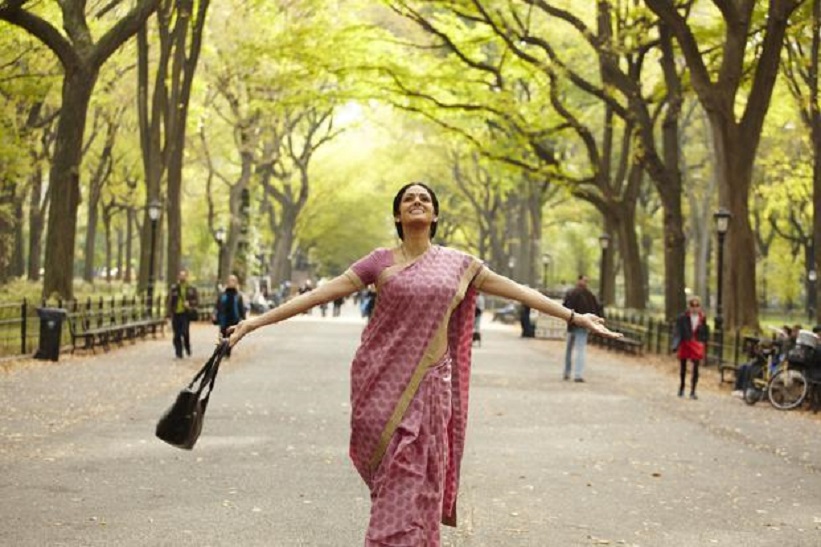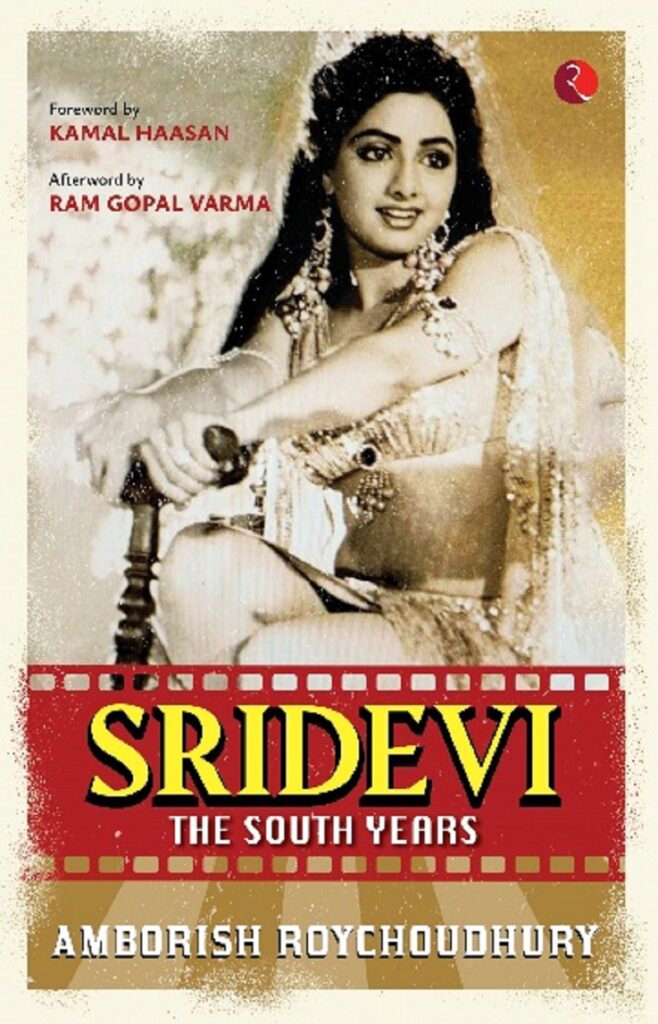
By Amborish Roychoudhury
This was in or around 1968. Ayyappan and Rajeswari were raising a happy little family while finding a way to adjust to the hustle and bustle of Madras. Sridevi was a sensitive child, often lost in a world of her own. It was easy to peg her as an introvert because she was so withdrawn, but there were rare moments when the future performer peeked out of her…
This phenomenon would always be a part of her life and work. Throughout her career as a heroine she mostly kept to herself, socializing only when absolutely necessary. But the very second she faced the camera, a floodgate of energy opened that electrified the whole atmosphere. When the shot was done, she used to clam up again.
Back in the 1960s, Sridevi and her family were living in the CIT Colony in Mylapore. Ayyappan, like his brother and his family, had to make an entry into politics. It all boiled down to choosing a party. His brother was already a senior member of the Janata Party. Ayyappan, on the other hand, closely followed the exploits of the Congress and its leader K. Kamaraj. In those days, Ayyappan used to visit the Kamaraj residence at Thirumalai Pillai Road quite often. On one such evening, he may have taken his daughter along. Little Sridevi was delighted at the opportunity of going out with her father. When they reached Kamaraj’s residence, he was surrounded by his associates discussing the possible reasons for his recent defeat in his constituency (Virudhunagar). Ayyappan, eager to learn the ropes of politics was quickly sucked into the discussion as well. As the elders spoke the Greek and Latin of politics, little Sridevi was bored to bits. Her initial exuberance of going out with her father was replaced with monotony. She was roaming about the hall, gazing at the pictures of Indian political icons lining the walls. But how was that going to hold her attention for long? She was getting impatient. She tugged at her father’s clothes and asked if they could go now. That was when the cherubic little kid caught the kingmaker’s attention. Ayyappan grinned from ear to ear and introduced her as his daughter. Kamaraj wanted to know about her schooling. Ayyappan revealed she would be turning five soon and they wanted to put her in for dance and music training, since her mother wanted her to become an actress. ‘That’s fine,’ said Kamaraj, ‘but don’t stop schooling her.’
Kamaraj turned to his poet friend, who was observing from a distance and smiling away. ‘Help this cute child, if you can.’ The Kaviarasu nodded his approval. That day, they left Kamaraj’s house and headed home brimming with promise and potential…

Sridevi’s few minutes on-screen were glorious. The film can be found on YouTube. A close look at the scene puts one in awe of the six-year-old Sridevi’s histrionics. Tell me you can’t see the spark that was to later consume the whole nation, unabated for 30 years! Despite appearing at the fag end of the movie, Sridevi stole the show. It was as if she knew what she was born to do. There was not a moment of dithering or the natural timidity you see in the eyes of a child in an unfamiliar environment. In those six minutes, she had conquered the world of cinema. The audience was enraptured by the toddler portraying their revered Lord Muruga. Sridevi had, for all intents and purposes, truly arrived. All the posters and publicity material of the film featured her prominently. She wasn’t a star yet, but it was obvious that she was special…
In a 1985 interview given to Bhawana Somaaya, Sridevi reminisced about meeting Sowcar Janaki for the first time: […] At the shooting, I saw Sowcar Janaki. I liked her shimmery clothes and jewellery. My first film was shot inside a temple. I played Lord Murugan. Just before the shot, the director insisted that I shave my head to play the role of the deity. My mother wasn’t willing. ‘My child has to go to school,’ she cried. There were long discussions. Eventually, Sowcar Janaki intervened and suggested I wear a wig. The wig felt funny on the head. Nevertheless, I thoroughly enjoyed myself in the film atmosphere.4 Close on the heels of Thunaivan came a plethora of mythological films, with Sridevi as the quintessential Muruga for Tamil filmgoers. This includes films like Aathi Parasakthi (1971) and Agathiyar (1972). These three men—Kingmaker Kamaraj, the poet Kannadasan and ‘Sandow’ Chinnappa Thevar—laid the foundation for Sridevi’s stardom. Had they not seen the face of a god in her that day, the world would probably not have witnessed the phenomenon called Sridevi.
- Excerpted from Sridevi: The South Years by Amborish Roychoudhury with permission from Rupa Publications
Follow this link to join our WhatsApp group: Join Now
Be Part of Quality Journalism |
Quality journalism takes a lot of time, money and hard work to produce and despite all the hardships we still do it. Our reporters and editors are working overtime in Kashmir and beyond to cover what you care about, break big stories, and expose injustices that can change lives. Today more people are reading Kashmir Observer than ever, but only a handful are paying while advertising revenues are falling fast. |
| ACT NOW |
| MONTHLY | Rs 100 | |
| YEARLY | Rs 1000 | |
| LIFETIME | Rs 10000 | |













